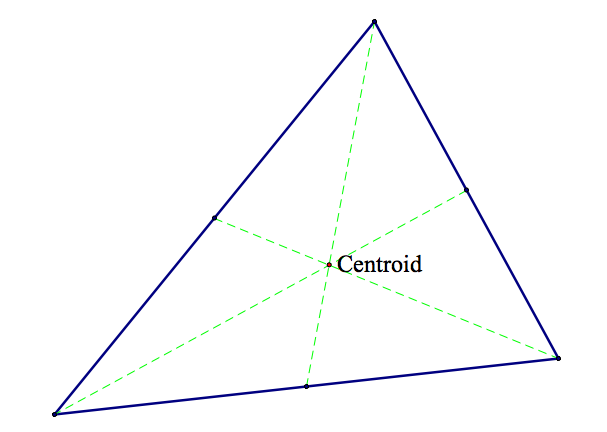
Assignment 4 - Centers of a Triangle
Faith Hoyt
In this assignment, we will find all four centers of the triangle and investigate their relationship to each other as well as to the triangle.
First, we need to find each of the centers of the triangle: centroid, orthocenter, circumcenter, and incenter. Let's first find the centroid. To do this, we must find the midpoints of each of the three segments of the triangle. Once we find these, we construct segments from the midpoint to the opposite vertex (the way I helped my math 1 students remember this pairing was by word association: centroid is similar to meteoroid and centroids go with MEDians so I told them to remember centroid and meteoroid go together and meteoroid sounded similar to median). We can see a sketch of one below:

Now, we want to find the second center, the orthocenter. In order to find this, we select one vertex and the opposite side. We want to construct a perpendicular line to the opposite side that goes through that given vertex. After we do this for each vertex, we will have three lines that intersect at the point called the orthocenter (one way I helped my math 1 students remember that the orthocenter was paired with altitudes was this: an ORTHOdontist works on teeth and teeth are perpendicular to your gums, so just remember perpendicular with ortho). We can see a sketch of an orthocenter below:
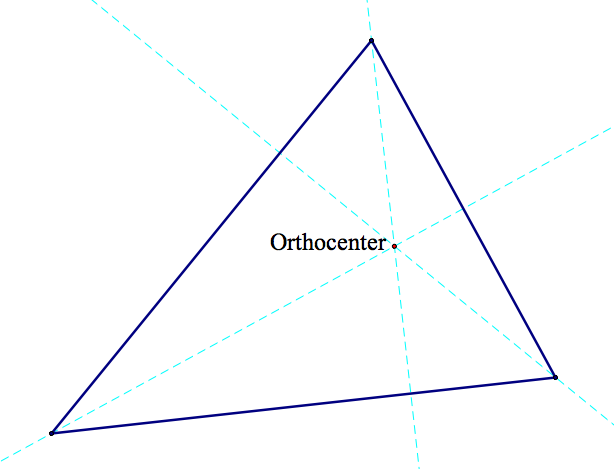
Our third center is the circumcenter. To construct this center, we want to find the perpendicular bisectors. You must first find the midpoints of the three segments of the triangles. Once these have been found, we want to construct a perpendicular line through that point. Do this three times and their intersection will create the circumcenter (the way I had my students remember this was by the association between the circumcenter and the circumcircle, where the circumcircle goes through all three points of the triangle with our center as the center of that circle as well. This was associated with the perpendicular bisectors purely by memory as we could not come up with anything creative for that). We can see a sketch of a circumcenter below:
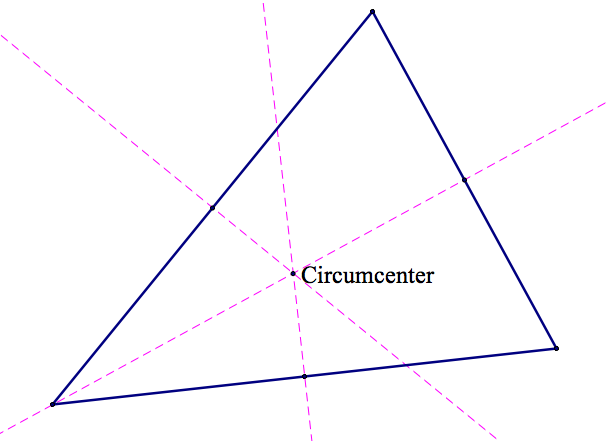
Now, our final center, the incenter. To construct this center, we want to find the angle bisectors. You first have to select an angle by selecting the three vertices. Then, you want to construct the angle bisector (in GSP this is easy as there is already a command in the construct menu). You want to do this three times, being sure to select your three vertices in a different order every time. The intersection of this will give you your incenter (to help my students remember this, I showed them the relationship between the incenter and the incircle. They saw that the incenter went through the three intersection points on the triangle from the angle bisector. Thus, the circle was INside and the center was the INcenter). A sketch of an incenter can be seen below:
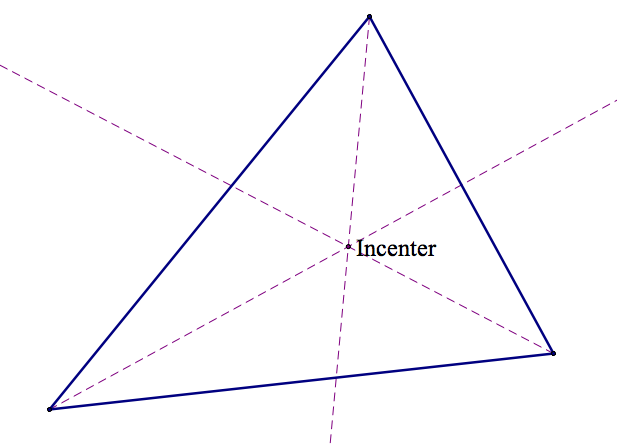
Now that we have all of our centers constructed we can combine them into one triangle. To do this I simply constructed each of the centers in a new triangle and labeled them as follows: Centroid (G), Orthocenter (H), Circumcenter (C), and Incenter (I). Then, I varied the type of triangle to see what the centers would do and if there was anything special about certain triangles and the centers.
First, let's look at an Acute triangle.
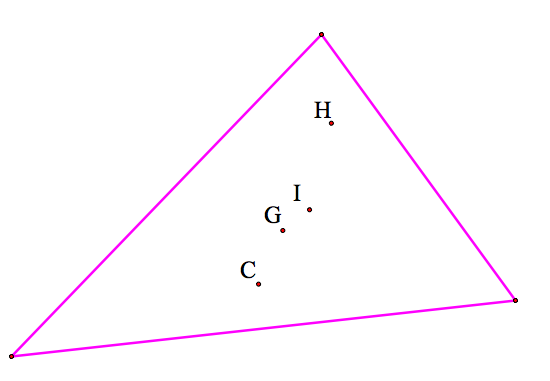
Some things to notice:
Now, what about a right triangle?
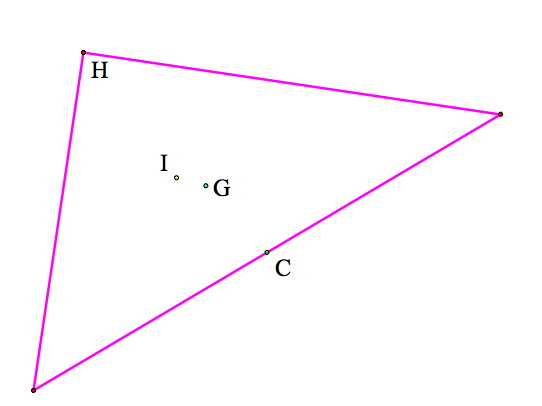
Some things to notice:
What about an Obtuse triangle?
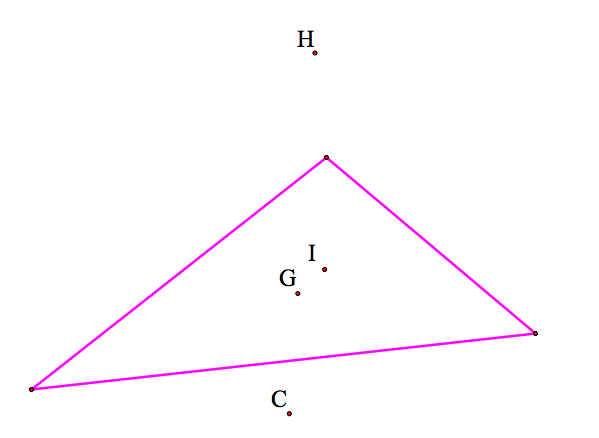
Some things to notice:
Now, let's look at an equilateral triangle:
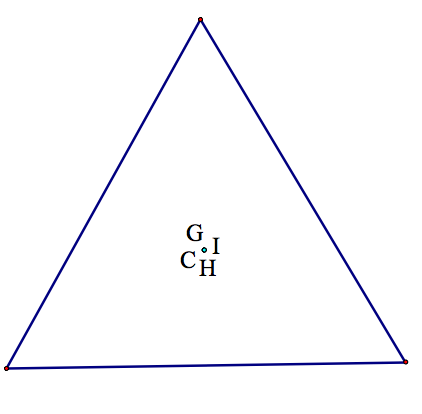
Some things to notice:
Now, let's finally look at an Isosceles Triangle:

Some things to notice:
Thus, we can see that with all of our centers, depending on the type of triangle, you can see how much each center varies.
If you would like to play around with a sketch and investigate on your own, click here.